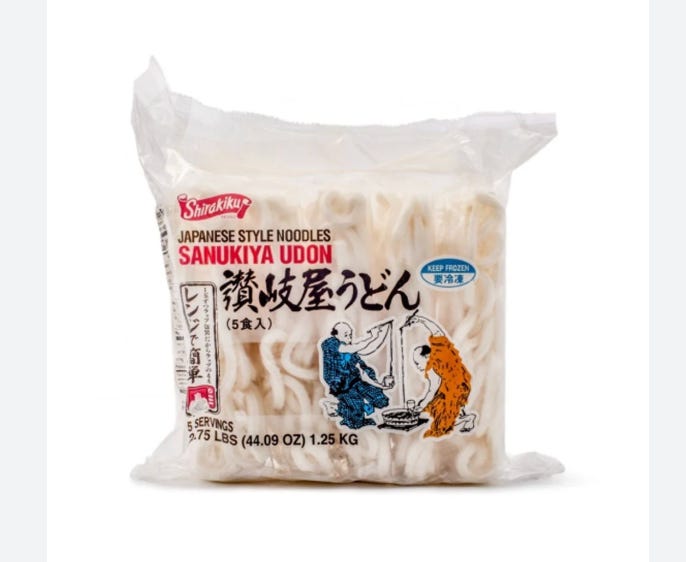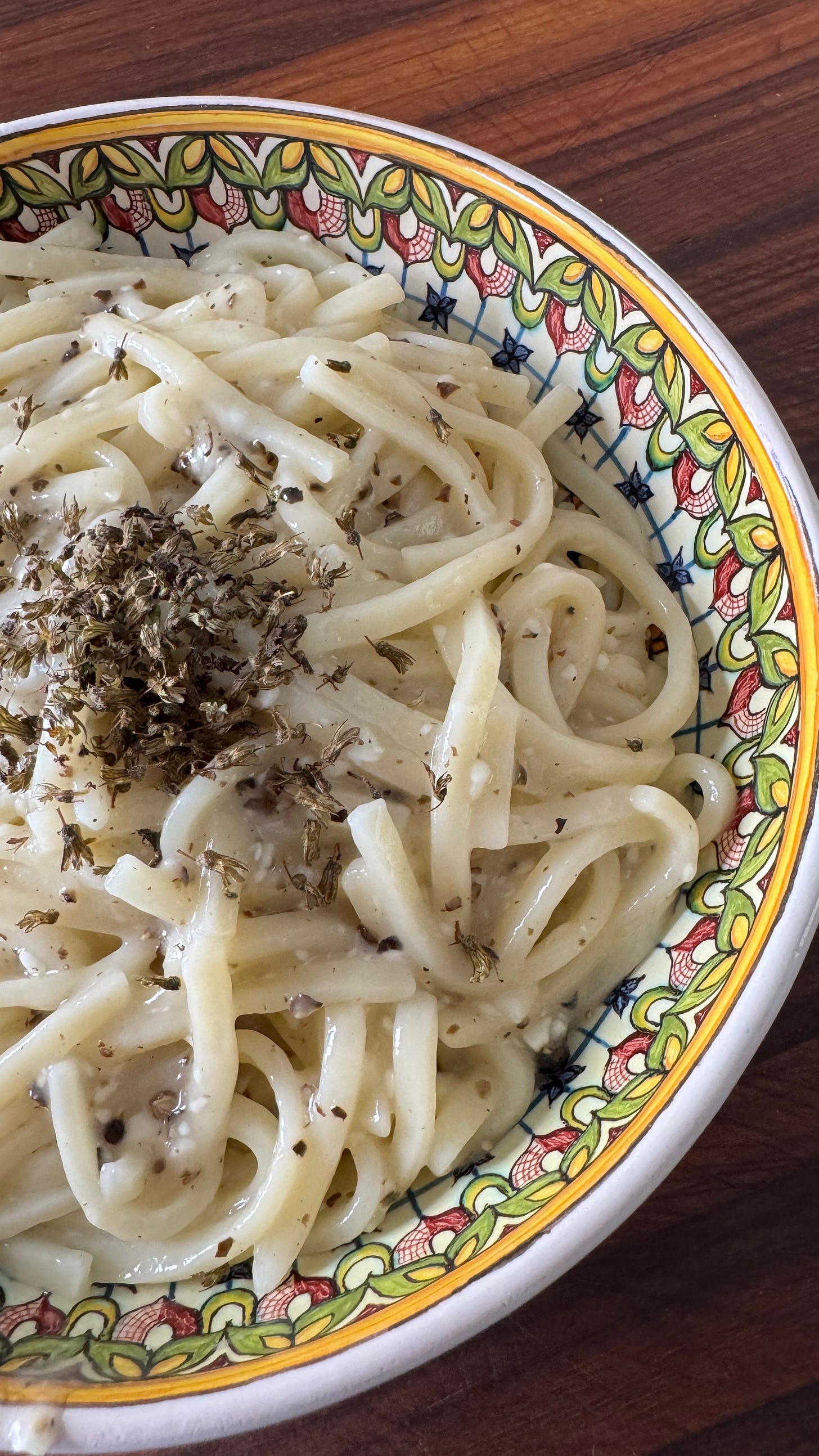Yes everything starts with noodles for me. And I happened to be sitting on two really great ingredients. Raw Pepper and fresh Udon from Japan. All flight home I thought about what I was going to do with this incredibly potent and fragrant pepper.
The Italian daughter in me went to Cacio e Pepe. If you have had a perfectly made bowl of this pasta dish in Rome or anywhere else, you know what I mean. It’s simplicity and perfection cannot be beat. Plus it packs a PUNCH. Levels of pepper and sharpness of cheese create the scale.
There is no such thing as too much pepper for me, so as soon as I made it home I made this to great glee. But here’s the thing. This dish is just as good with frozen udon from the store and just great black pepper and a great hard cheese. I went with Grana Padano because I really wanted to taste both the pepper and the fresh udon. With frozen udon I would go with Aged Pecorino Romano. But there simply so mnay combos of Udon | Pepper | Cheese. Get crazy with it.
Here’s a sharpness scale for Italian hard cheeses, from mildest to sharpest:
Mildest → Grana Padano - The gentlest of the group, with a sweet, delicate, nutty flavor. Less complex than Parmigiano-Reggiano, making it more approachable.
Mild to Medium → Young Parmigiano-Reggiano (12-18 months) - Milder and creamier, with fruity, nutty notes and just a hint of sharpness. Still relatively gentle on the palate.
Medium → Aged Parmigiano-Reggiano (24-30 months) - Develops more complexity with a balanced sharpness, crystalline texture, and deeper umami flavors. This is the standard aging for most Parm you’ll find. → Young Pecorino Romano (5-8 months) - Noticeably sharper than Parmigiano due to the sheep’s milk, with a saltier, more assertive bite, but still relatively restrained.
Sharp → Extra-Aged Parmigiano-Reggiano (36+ months) - Intense, concentrated flavors with pronounced crystals, deep umami, and considerable sharpness. Complex and bold.
Very Sharp → Aged Pecorino Romano (8-12 months) - Aggressively sharp and salty with a pungent, almost peppery bite. This is the traditional aging for pecorino and what you’d use in cacio e pepe or carbonara. It can be quite assertive and even slightly “sheepy” in flavor.
Key difference: Pecorino Romano is inherently sharper than Parmigiano-Reggiano or Grana Padano because it’s made from sheep’s milk rather than cow’s milk. Sheep’s milk has a higher fat content and produces a more intense, tangy flavor profile. Even young pecorino will generally taste sharper than aged Parmigiano.

Cacio e Pepe Udon(Serves 4)
INGREDIENTS
4 portions of frozen Udon
2 cups (200g) finely grated Pecorino Romano cheese, at room temperature
2-3 tablespoons whole black peppercorns
Salt for pasta water
PROCESS
Toast the pepper: Coarsely crush the peppercorns in a mortar and pestle or spice grinder. Toast in a large skillet over medium heat for 1-2 minutes until fragrant. Set aside half for garnish.
Boil the pasta: Bring a large pot of water to boil (use less water than usual—about 2-3 quarts). Salt it well. Add pasta and cook until just under al dente (about 1-2 minutes less than package directions).
Prep the cheese: While pasta cooks, put the grated pecorino in a large bowl. Add a few tablespoons of hot pasta water and stir vigorously to create a smooth paste.
Create the sauce: Reserve about 2 cups of pasta water. Drain the pasta and add it to the skillet with the toasted pepper over low heat. Add about 1/2 cup pasta water and toss for 1 minute.
Emulsify: Remove skillet from heat. Add the cheese paste and toss vigorously, adding pasta water a little at a time (you’ll probably use 1-1.5 cups total) until you get a creamy, glossy sauce that coats the pasta. Work quickly and keep it moving.
Serve immediately: Divide among warm bowls and top with reserved pepper and extra pecorino if desired.
Key tip: The sauce should be creamy, not clumpy or greasy. If it breaks, add a splash of pasta water and toss vigorously off the heat.



